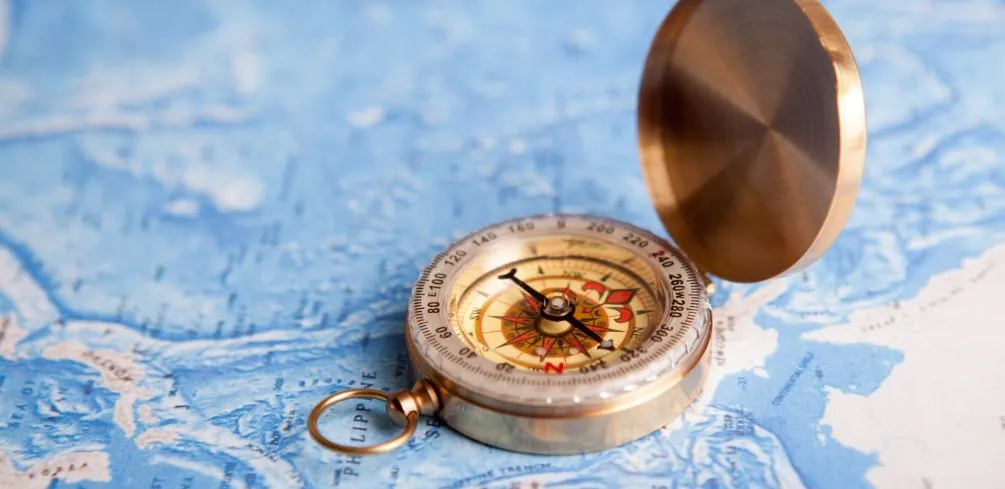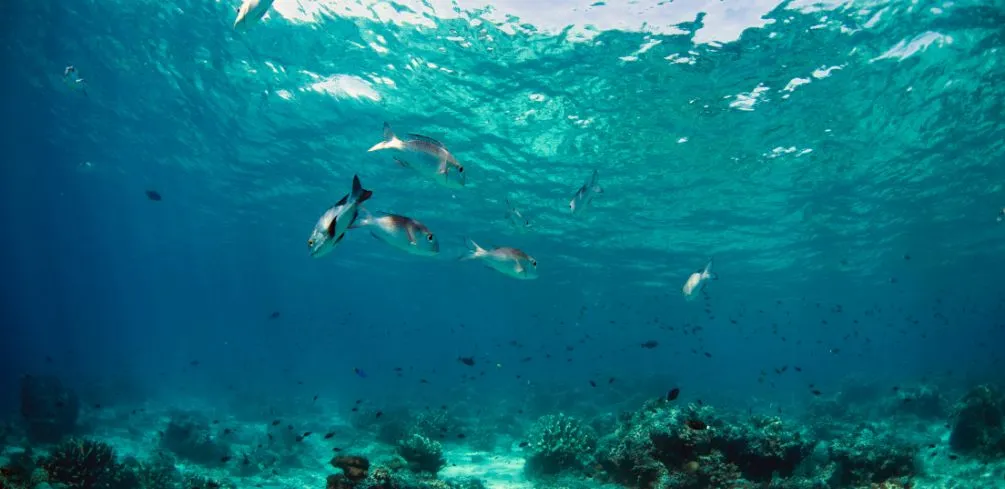Navigation is a critical part of everyday life. Whether we’re looking for the quickest route to work or planning a vacation, we rely on our navigational skills to help us get from point A to point B. But have you ever stopped to consider how temperature variations can impact navigation?
Temperature can affect the way we interact with maps and other navigational tools, making it harder for us to accurately plan our journeys. In this article, I’ll be exploring how temperature affects navigation and what you can do to make sure your journey goes as smoothly as possible.
Have you ever tried using a map in extreme temperatures? If so, you’ll know just how difficult it can be!
Changes in air pressure due to high temperatures can cause inaccuracy in GPS readings, while strong winds and low visibility caused by lower temperatures can make it hard for us to find our bearings. With these challenges in mind, let’s take a look at how temperature variations affect navigation – and what steps we can take to stay on track!
When planning any kind of journey, it’s important that we take into account any potential weather obstacles that could stand in our way. Temperature fluctuations are just one factor that can influence the accuracy of our navigational tools – but with a little knowledge and preparation, they don’t need to stop us from reaching our destination! In the following article, I’ll show you exactly how temperature variations impact navigation – so let’s get started!
Overview Of the Navigation Process
Navigation is an important skill for many activities, from orienteering to sailing. It involves locating one’s position and then finding a way to the desired destination. The navigation process consists of a few key components: map reading, direction finding, and compass use.
Map reading involves using symbols and other visual cues to interpret the landscape. This can include understanding topographical features like rivers, roads, and mountains. Additionally, it can involve reading signs to determine the location or route.
Direction finding is the practice of figuring out which direction you are facing on a map and which direction you need to go in order to reach your destination. Lastly, compass use helps one accurately determine their current location as well as their route relative to the map they are reading.
Temperature variations can have an impact on all these aspects of navigation if not accounted for properly. Different temperatures can cause changes in air pressure that affect how compasses read directions.
In addition, temperature variations can cause changes in land features, such as snow or ice cover, that may not be depicted on the map being used for navigation. By taking into account temperature variations when navigating, you can ensure successful navigation and safe arrival at your intended destination.
Effects Of Temperature On Orientation
Navigation is a highly nuanced process that relies on many variables. One of the most important of these variables is temperature. After all, temperature variations can have a tremendous effect on orientation and navigation.
It’s almost as if the temperature has an innate power to affect our understanding of the world around us! From subtle alterations in weather patterns to drastic changes in climate, the temperature can easily alter our sense of direction and lead us astray. Even a small shift in temperature can cause us to become disoriented and confused when it comes to navigating unfamiliar terrain.
Temperature fluctuations also influence the way we gauge distances and perceive time. When temperatures drop, it’s harder to accurately measure the distance between two points or discern how much time has elapsed since the last marker was reached. This further complicates the navigation process and leads to further confusion when attempting to orient oneself within an unfamiliar territory.
With temperatures playing such an important role in navigation, it’s crucial that we remain aware of our surroundings and stay alert for any potential changes in temperature that could impact our orientation skills. By doing so, we can ensure that our navigation efforts remain accurate and successful no matter what environment we find ourselves in!
Challenges Of Extreme Temperatures
Navigating can be a tricky process, particularly in extreme temperatures. Temperature variations can have a profound effect on orientation and the navigation process. When temperatures are very low or very high, navigation challenges arise that can make it difficult to find your desired destination.
In cold climates, navigation becomes increasingly difficult as the temperature drops below freezing. Low temperatures can cause navigational instruments to malfunction, making it hard to determine one’s position accurately.
Cold weather also makes it harder for navigators to use traditional methods of orienteering, such as reading maps or using landmarks, due to the reduced visibility from snowfall and foggy conditions.
In hot climates, navigation is equally challenging due to the effects of heat on navigational instruments and increased fatigue from high temperatures. Hot weather can also cause errors in readings obtained from navigational equipment such as compasses,
GPS devices, and other electronic navigation systems due to the effects of magnetic interference from hot air currents. High temperatures also lead to dehydration which further complicates the navigation process by reducing alertness and energy levels required for successful navigation.
Overall, temperature variations present unique challenges when navigating that require careful consideration when embarking on a journey by sea, land, or air. Navigation processes must be adapted accordingly in order to account for these temperature-related obstacles and ensure successful travel outcomes.
Role Of Technology In Navigation
Have you ever wondered what role technology plays in navigating extreme temperatures? Technology has been a game-changer when it comes to navigating temperature variations and ensuring that travelers stay safe.
With the help of GPS navigation, navigation software, mapping software, and other navigation tools, as well as temperature sensors, navigating extreme temperatures has become much easier.
To start with, GPS navigation helps travelers plot their routes while they are on the move. It also allows them to get real-time updates on the current weather conditions along their route. This ensures that they can plan ahead if they encounter any temperature extremes.
Navigation software such as Google Maps also offers detailed maps of their destination so travelers can prepare in advance for any potential temperature changes.
In addition, mapping software helps travelers keep track of their progress and plan for potential hazards along the way. This includes areas where temperatures may rise or drop drastically over short distances. Temperature sensors also come in handy when trying to chart out routes in extreme temperate zones.
By monitoring temperature readings along the route, travelers can make more informed decisions about which paths to take when traveling through these regions.
Technology has significantly improved our ability to navigate extreme temperatures safely and efficiently. With the help of tools like GPS navigation, navigation software, mapping software, and temperature sensors, travelers can now map out their routes with confidence and enjoy peace of mind knowing that they are taking the right steps to stay safe during their journey.
Strategies To Overcome Weather-Related Obstacles
I know that temperature variations can have a huge impact on navigation. So, what are some strategies to overcome weather-related obstacles? Well, there are a few things you can do.
| Weather-proofing | Temperature-proofing |
|---|---|
| Use weatherized gear | Layer up appropriately |
| Be aware of changing conditions | Monitor temperatures closely |
| Prepare for extreme cold or heat | Dress in light and breathable materials |
First, weather-proofing your equipment is essential. You should use gear that is designed to withstand harsh weather conditions. This includes things like waterproof jackets, boots, and tents. Additionally, make sure your navigational instruments and maps are properly protected from the elements.
Second, temperature-proofing yourself is also important. Layering clothing appropriately will ensure that you stay warm in extreme cold and cool in extreme heat. It’s also important to monitor temperatures closely so you don’t get caught off guard by sudden changes in the environment.
Furthermore, dress in light and breathable materials to keep from getting too hot or too cold while out on the trail.
Ultimately, developing a good navigation strategy requires taking into account all potential challenges posed by the weather. With proper weather-proofing and temperature-proofing measures in place, you can improve your navigation efficiency no matter what Mother Nature throws your way!
Frequently Asked Questions
What Are The Most Reliable Navigation Tools For Extreme Temperatures?
Navigating in extreme temperatures can be a difficult task, but thankfully there are reliable navigation tools to help us stay on course. It’s understandable to feel apprehensive about entrusting your journey to technology, especially when temperatures vary so drastically. However, with the right navigation tools and strategies, you can feel safe and secure, knowing that you have the most accurate temperature data available.
When it comes to reliable navigation in extreme temperatures, accuracy is key. The best navigation tools should provide detailed temperature readings so that you know exactly what to expect as you plan your route.
This means considering options like GPS systems or even apps that allow you to check current weather conditions at any given time. Additionally, having access to real-time traffic updates can help ensure that your journey is as smooth and efficient as possible.
Finally, one of the most important elements of navigating in extreme temperatures is having an effective strategy for dealing with potential problems along the way. Make sure you have a backup plan in case of any unexpected weather changes or other issues that could disrupt your travel plans.
Knowing what resources are available and how best to use them will help make sure you stay safe and on track no matter what Mother Nature throws your way.
It’s essential to equip yourself with the right knowledge and resources before embarking on a journey through fluctuating temperature conditions; this way, you can rest assured that your navigation is consistently reliable throughout your trip.
What Are The Effects Of Temperature Fluctuations On Navigation Accuracy?
Navigation accuracy is heavily impacted by temperature fluctuations. Even small changes in temperature can affect a person’s ability to navigate accurately.
Temperature extremes, such as extreme cold and extreme heat, can be particularly challenging when it comes to navigation. To maintain navigation accuracy in these conditions, one must adjust their navigation strategies accordingly.
So what are the effects of temperature fluctuations on navigation accuracy? Here are three key points:
- Navigation systems may become unreliable when temperatures change drastically.
- Navigation accuracy decreases with higher temperatures and increases with lower temperatures.
- Navigators must adjust their strategies and use specialized tools to account for extreme temperatures.
Navigation systems are prone to becoming unreliable when exposed to high or low temperatures, which can lead to inaccurate results or even complete failure of the system.
Navigators must utilize tools designed for the climate they’re navigating in and adjust their strategies accordingly, such as using a compass instead of GPS at extreme temperatures. This will help them maintain accurate navigation despite any changes in temperature that might occur during their journey.
Additionally, navigators should be aware that their accuracy will be affected differently depending on the temperature: higher temperatures decrease navigation accuracy while lower temperatures increase it due to factors such as air pressure and atmospheric moisture levels fluctuating with changing weather patterns.
Knowing how temperature variations impact navigation systems is key to successful navigation – especially in extreme climates where traditional navigation systems may not work properly or at all!
Is Navigation More Difficult In Cold Or Hot Temperature Extremes?
Navigation is an essential skill in many activities and scenarios, so it’s important to understand how temperature can impact our accuracy. The current H2 asks: Is navigation more difficult in cold or hot temperature extremes? To answer this question, we need to look at the effects of navigating in both cold and hot weather.
When navigating in cold temperatures, the challenge lies in dealing with freezing conditions and possible snowfall. Cold-weather navigation requires special equipment and strategies for staying warm, such as layered clothing and insulation to keep out the chill. Navigators must also be mindful of frostbite, which can affect their ability to accurately use maps and compasses.
On the other hand, navigating in hot temperatures presents its own challenges. Heat exhaustion can lead to confusion, dizziness, headaches, and dehydration – all of which can interfere with a navigator’s accuracy.
Hot-weather navigation also requires adequate hydration and an understanding of local climate conditions in order to stay safe while traveling.
In short, both cold-weather navigation and hot-weather navigation require special considerations for safety and accuracy. Temperature variations have a significant impact on navigation due to their potential effects on navigators’ health and well-being. As such, it is important for navigators to take into account the temperature when planning any trip or journey.
Are There Any Navigation Systems That Are More Resistant To Temperature Changes?
Navigation systems and their ability to function in different temperature extremes is a concern for many. Are there navigation systems that are more resistant to temperature changes? This question is worth exploring.
When considering navigation temperature resistance, it’s important to understand how temperature fluctuations impact navigation systems. With temperature changes, navigation systems may experience unexpected behavior, such as inaccurate readings or sudden shutoffs. To combat this, certain navigation systems have been designed with features that make them more temperature resistant.
One example of a temperature-resistant navigation system is the Global Positioning System (GPS). GPS receivers are designed with additional hardware and software features that make them more resilient in the face of varying temperatures.
These features enable the receiver to maintain an accurate position even when temperatures fluctuate throughout the day. Additionally, some technologies use thermal compensation techniques that help reduce the effects of extreme temperatures on navigational accuracy and performance.
Temperature variations can have an effect on any type of navigational system, but with proper design and maintenance, these effects can be minimized and navigational efficiency can be improved. Navigation temperature resistance is an important factor when it comes to determining which system will best meet your needs in different weather conditions.
What Are The Recommended Strategies For Navigating In Extreme Temperatures?
Navigating extreme temperatures can be like walking a tightrope; it requires careful planning and precision. When considering the strategies for navigating in these conditions, one must take into account the unique risks that come with extreme temperatures. What are the recommended strategies for navigating these challenging conditions?
When it comes to navigating extreme temperatures, safety is of the utmost importance. Having a plan ahead of time is essential, as are recommendations from experts on guidance when dealing with such conditions. It’s also essential to have adequate supplies and clothing to ensure that you can remain safe while traveling in such harsh environments.
Weather forecasts should also be monitored closely before embarking on any journey, as sudden changes in temperature can lead to dangerous situations.
Finally, having a trusted network of experienced navigators or guides is invaluable when it comes to navigating extreme temperatures. These individuals are familiar with the terrain and risks associated with specific climates and can provide valuable advice on the best practices for staying safe while traversing difficult environments.
By relying on those who understand both the physical and mental challenges of navigating in such conditions, travelers can rest assured that they have access to reliable information and support during their journey.
Conclusion
In conclusion, navigating in extreme temperatures can be a challenge for many travelers. While it is important to be aware of the potential impact of temperature fluctuations on navigation accuracy, there are tools and strategies that can help you navigate safely and accurately.
The most reliable navigation tools for extreme temperatures include GPS systems, paper maps, and compasses. GPS systems tend to be more accurate as long as they have a clear view of the sky, but paper maps and compasses are also viable options if you prefer them.
Although it is more difficult to navigate in the cold than in hot temperature extremes due to the impact of technology, there are navigation systems that are designed to work in both environments with relative accuracy.
Finally, it is important to recognize the importance of preparing properly before embarking on a journey in extreme temperatures. Researching recommended strategies for navigating in these environments, such as monitoring battery power levels and protecting devices from direct sunlight or extreme cold, will help ensure that you stay safe while traveling.
Although some might argue that navigating in extreme temperatures can be too risky or complicated, with the right preparation, anyone can travel confidently, even in harsh conditions.






